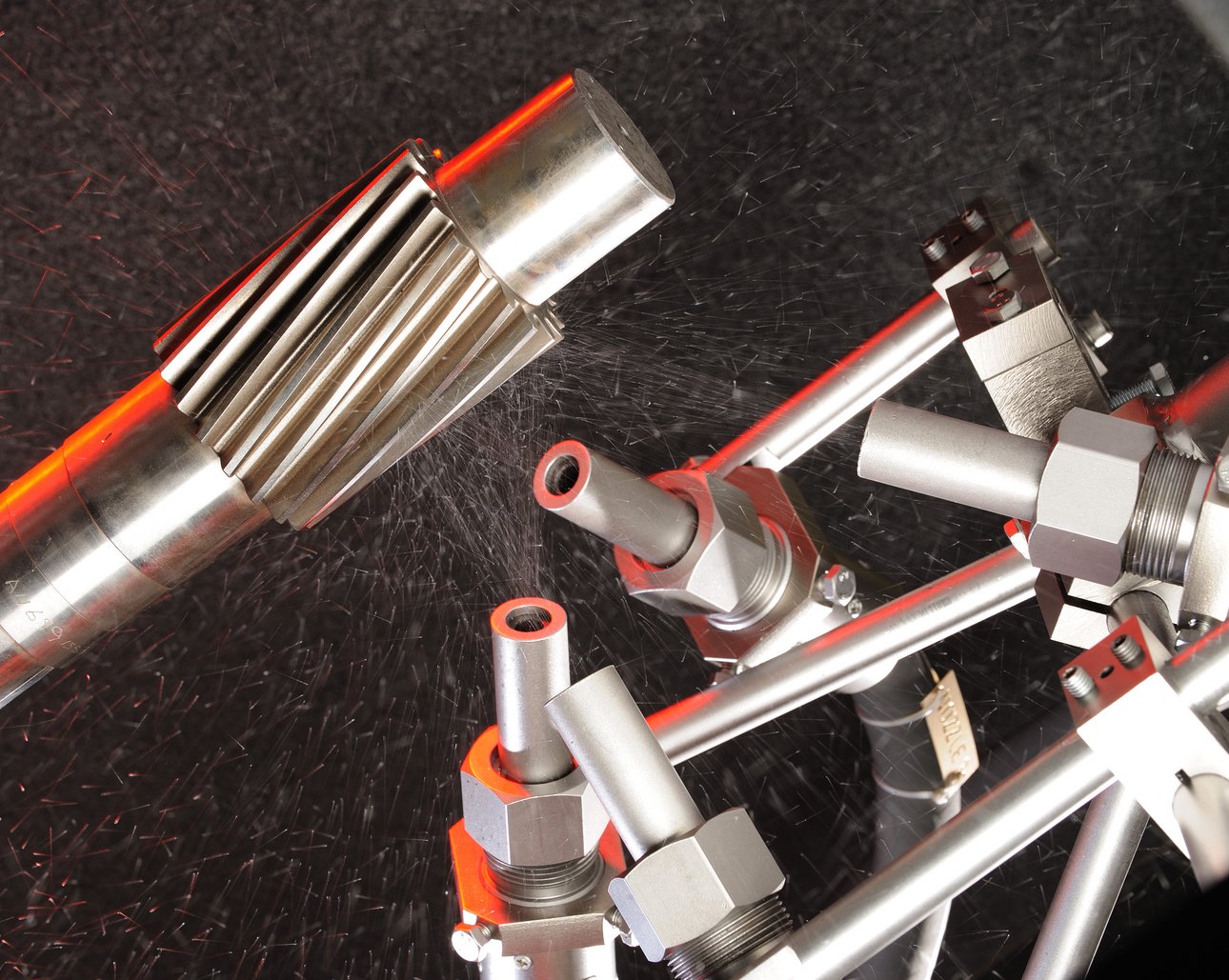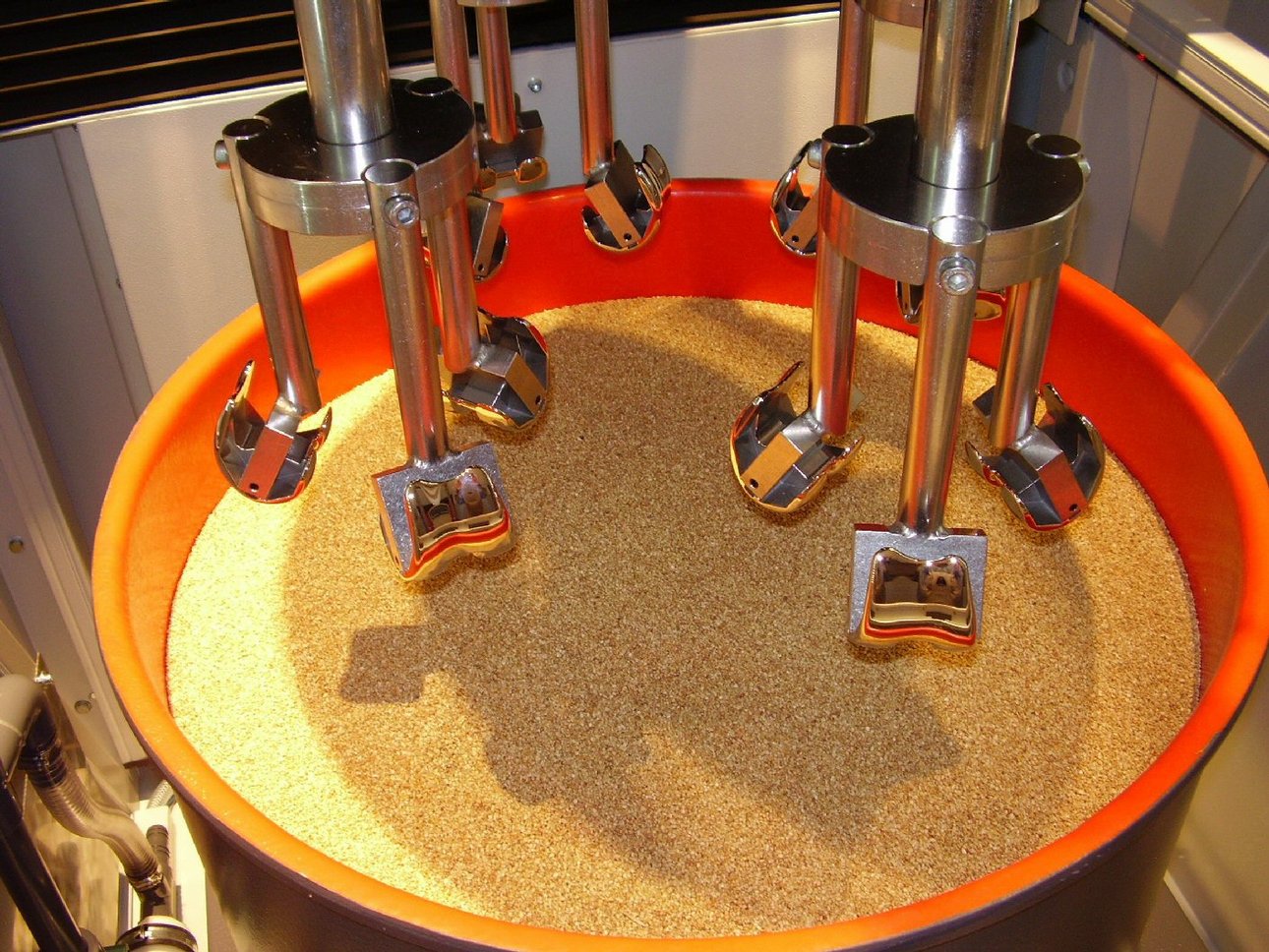
Joint Reconstruction, Part 4 – Comparing Surface Finishing Methods
, roslerusa - Back to overview
Shot blasting and mass finishing have become indispensable technologies for surface preparation and finishing of joint reconstruction implants. Their applications range from surface cleaning, deburring, edge radiusing after forging, casting, additive manufacturing, and machining to surface preparation for different kinds of coatings, shot peening for increasing the longevity of an implant, and placing an extremely smooth, high-gloss finish on the implants before they are inserted into the body.
Rosler Metal Finishing leverages its extensive experience in the medical industry to create customized solutions and equipment for the treatment of joint reconstruction implants.
This installment of the Joint Reconstruction Series will compare the working principles and features of utilizing shot blasting and mass finishing technologies for endoprosthetic implants.
Mass Finishing
Mass finishing works as a grinding system to
create pressure and rubbing between work pieces and media. This smoothing,
polishing effect can achieve surface finishes as low as Ra = 0.8 micro inches.
Knee femorals are often processed in a drag finishing machine.
Uses include deburring/edge radiusing, surface
cleaning (descaling, de-oiling) after casting, forging, blanking, machining,
grinding, heat treatment, thread rolling for screws, and additive
manufacturing.
The smoothness of a surface is particularly
important for implant areas that are interacting with each other for proper
operation and movement.
Shot Blasting
Shot blasting utilizes the impact of small metal
or mineral pellets to produce cleaning, peening, or texturing effects on a work
piece. With throwing speeds of 200-800 feet per second, this method can achieve
surface finishes of 16-32 micro inches.
This exceptionally versatile surface treatment
technology is used for deburring/de-flashing, surface cleaning (de-scaling,
de-rusting, stripping of coatings), surface preparation for coating, for
cosmetic purposes, and surface improvement. Most medical applications utilize
air and wet blast systems.
Shot blasting generally makes a surface rougher
and is useful in treating area of joint reconstruction implants that are
implanted into the bone to promote osseointegration or as preparation for
coatings.
One exception of shot blasting’s roughening effect
is the use with additive manufactured parts. Because these parts start with a
much higher surface roughness than parts (up to Ra of 2,000 micro inches), shot
blasting can be used to pre-smooth this material.
Achieving Solutions
Individually and when combined as a multi-stage
process, mass finishing and shot blasting offer a number of benefits.
- They create homogeneous, all-around “isotropic” (multi-directional) finishes as opposed to “anisotropic” (mono-directional) surface structures produced by machining, belt and wheel grinding, drawing, and extrusion.
- Both can handle all materials, from the toughest metals like titanium and Inconel to all kinds of polymers and even ceramics.
- Whatever the task, mass finishing and shot blasting produce consistent, absolutely repeatable finishing results. They completely eliminate quality fluctuations inherent in manual or other mechanical finishing methods.
- Users can choose from a broad equipment spectrum, from simple, low-cost stand-alone machines to fully automated finishing systems.
- In combination with other methods, both technologies create perfect surface finishes on additive manufactured parts.
Creating Consistency
In addition to being very cost-effective, both
mass finishing and shot blasting are highly adaptable to customer needs. The
equipment spectrum ranges from small manual or semi-automatic machines for low
production volumes to fully automatic systems for high volume production.
The customer decides, how much they want to spend
and what degree of automation is desired. The costs for work piece fixtures –
if required – are manageable, and due to the high degree of mechanization and
automation, the personnel costs are only a small percentage of the total costs.
For relatively simple processes the costs per piece can be as low as a few cents. With more complex, multi-step finishing operations for high-value components such as joint reconstruction implants, the entire finishing costs will amount to no more than just a few dollars.
The big savings are, however, achieved by the
stability of the finishing processes, ensuring absolutely repeatable,
high-quality finishing results with zero scrap rates since even the smallest
nick or dent on a component will render it unsuitable for implantation!
The Rosler Way
No matter what surface treatment your joint reconstruction implants require, Rosler Metal Finishing can help you find a better way and achieve the exact finish needed every time. Contact us today to discuss your unique challenges.
The complete Joint Reconstruction Series includes:
- Part 1 – Expertise for Endoprosthetics.
- Part 2 – Material Standards.
- Part 3 – Finishing Standards.
- Part 4 – Comparing Surface Finishing Methods.
- Part 5 – Mass Finishing for Smooth, Polished Surfaces.
- Part 6 – Shot Blasting for Surface Finishing, Coating Preparation, and Increased Component Life Span.
Sign up for enews alerts to be notified of all Rosler blog posts!

